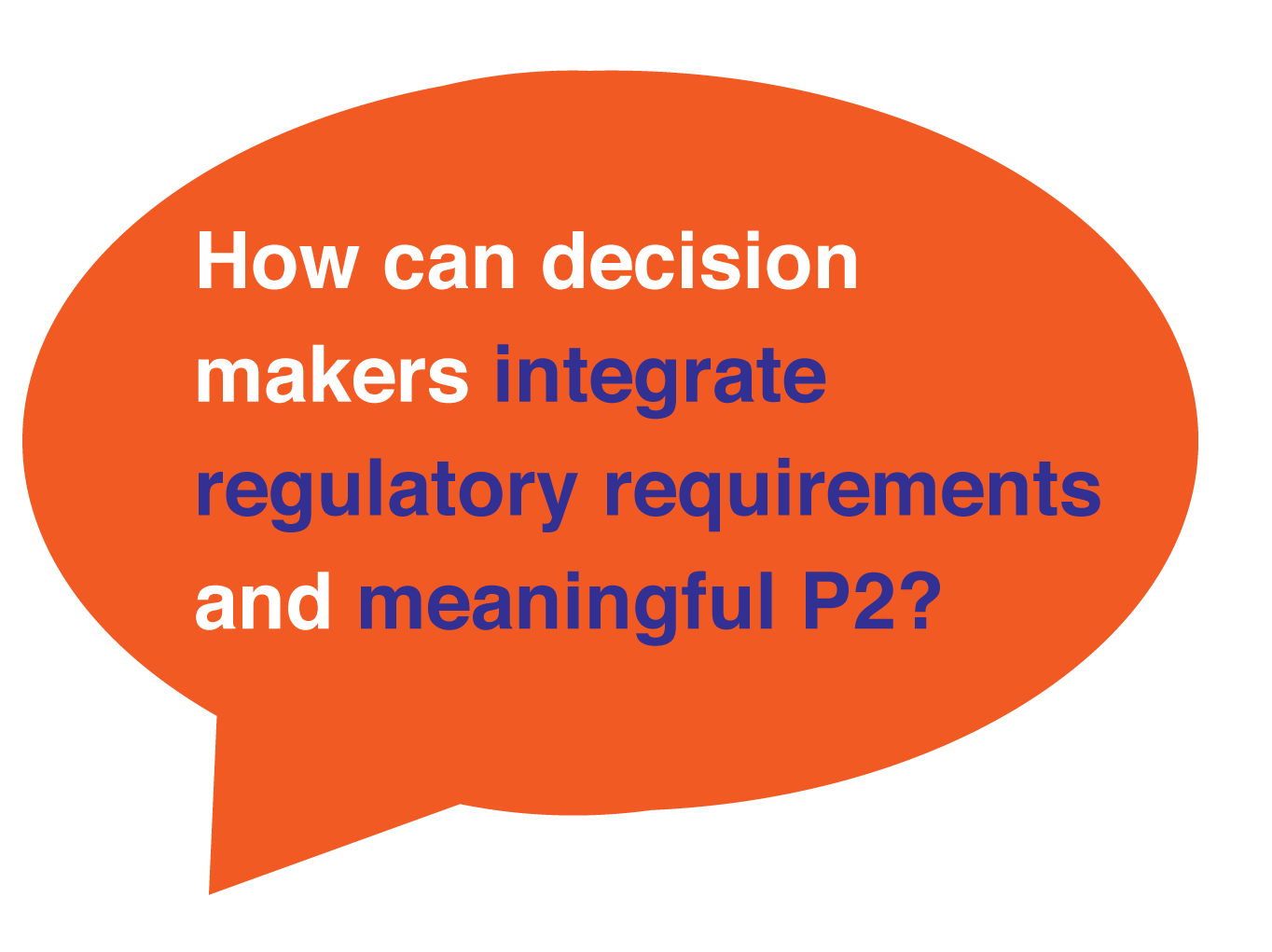Bringing the conversation to a community near you!
At a time when highly technical and complex projects such as natural gas pipelines, electricity transmission projects and multimodal transportation developments are on the rise, more stakeholder groups are clamoring for a greater role in planning, problem solving and decision-making. In the 2018 IAP2 USA National Dialogue, we hope to learn what P2 practitioners and other community engagement professionals say about the P2 practices currently being used in these projects and how the public can be engaged more successfully in the future. IAP2 USA kicked off its 2018 National Dialogue in Austin, Texas, this past February. Over the coming year, we want to learn how the revived spirit of "localism" in large and small communities across the country is impacting decision-making where we live and work. What ideas and suggestions can P2 practitioners and others make to better understand and respond to the growing tension among individual stakeholders, advocacy groups and project managers? |
National Dialogue: : How and why the public should be engaged in highly technical and complex projects?
 |  | 
|
At-a-glance: 2018 National Dialogue Kick-off Summary
The 2018 National Dialogue began at the Skills Symposium in Austin, Texas, with an introduction by IAP2 USA President Leah Jaramillo and emerging Lone Star Chapter representative Tina Geiselbrecht. Event sponsor and Outreach Experts CEO Jay Vincent then opened the discussion on the role of the public in highly technical, complex projects. Sharing his experience in the energy industry, Vincent highlighted the growing tension between the regulatory agencies responsible for approving energy development projects and the public.
Using card storming and focused conversations, participants were led through a series of tabletop exercises on the following questions:
- What are the barriers to engaging the public in highly technical and/or complex projects?
- Why are regulators/project sponsors/clients/internal staff afraid (fear) of engaging the public in highly technical and/or complex projects?
Table reps posted each group’s tops ideas to a sticky wall and grouped the responses into subthemes. After reviewing the subthemes group members returned to their tables for a focused conversation on two follow up discussion questions.
- DQ1: Discussion How might we overcome these challenges?
- DQ2: What might IAP2 USA do to help? (have a volunteer take notes on the flip chart
Major Themes
- Diversity of agency processes
- Inability to understand community interests
- Lack of understanding
- Diversity of stakeholders
- Lack of clarity around expectations
- Time (whose frame of reference is relevant to setting time boundaries)
- Preparing technical challenges
- Managing technical information
- Managing resources
Before closing, some participants completed a short survey on the role of state and federal regulatory agencies in project permitting processes. The results begin to help us understand what experts think of the overall effectiveness of the three levels of government in relation to IAP2 Core Values and how these entities interact with the public in relation to the P2 spectrum. A civic engagement and demographic battery provided insight on the civic and community engagement practices of participating P2 professionals.
Conversation starter: Participant survey 2018 National Dialogue
Initial Participant Survey Results
Most respondents felt the government could be more effective in their public engagement, and interacted with the public at the lowest levels of the P2 spectrum: 80% of respondents felt their local government was effective at involving the public in permitting approval processes for complex projects. 40% of respondents felt their federal government was ineffective at managing the permitting approval process for complex infrastructure projects while 20% of respondents felt their state/provincial government and local governments were ineffective at this process. 100% of respondents felt their federal regulatory agencies typically engaged citizens on complex projects at the inform level, while 60% of respondents felt this of their state/provincial regulatory agencies and 20% of respondents agreed this described their local regulatory agencies. 40% of respondents felt their state/provincial regulatory agencies typically engaged citizens on complex projects at the consult level. | Our sample of P2 respondents showed a high level of civic and community engagement: 40% of respondents have participated in 10 or more civic or political causes within the past 12 months. 80% of respondents have contacted one or more elected officials with regard to a civic-related issue or concern. 100% of respondents have participated in a community event such as a run, walk, fair, festival, council meeting, within the past 12 months. 80% of respondents have voted in 4 of 4 of the past federal elections. These results are a springboard from which we hope to learn more about the use of IAP2’s Core Values in large, technically complex projects at the regional, state and local levels. We hope to better understand how the Core Values are being utilized in large-scale projects across the United States. The initial survey served as the basis of the expanded survey you’ll find in the 2018 National Dialogue toolkit. With your help, we hope to collect a lot more data. |
Now it’s your turn to host a National Dialogue discussion in your community. The carefully planned toolkit will make event planning quick and easy.
Supplemental Resources: Take some, leave some.
NOTE: You must be logged in to add resources, or comment on posts.
